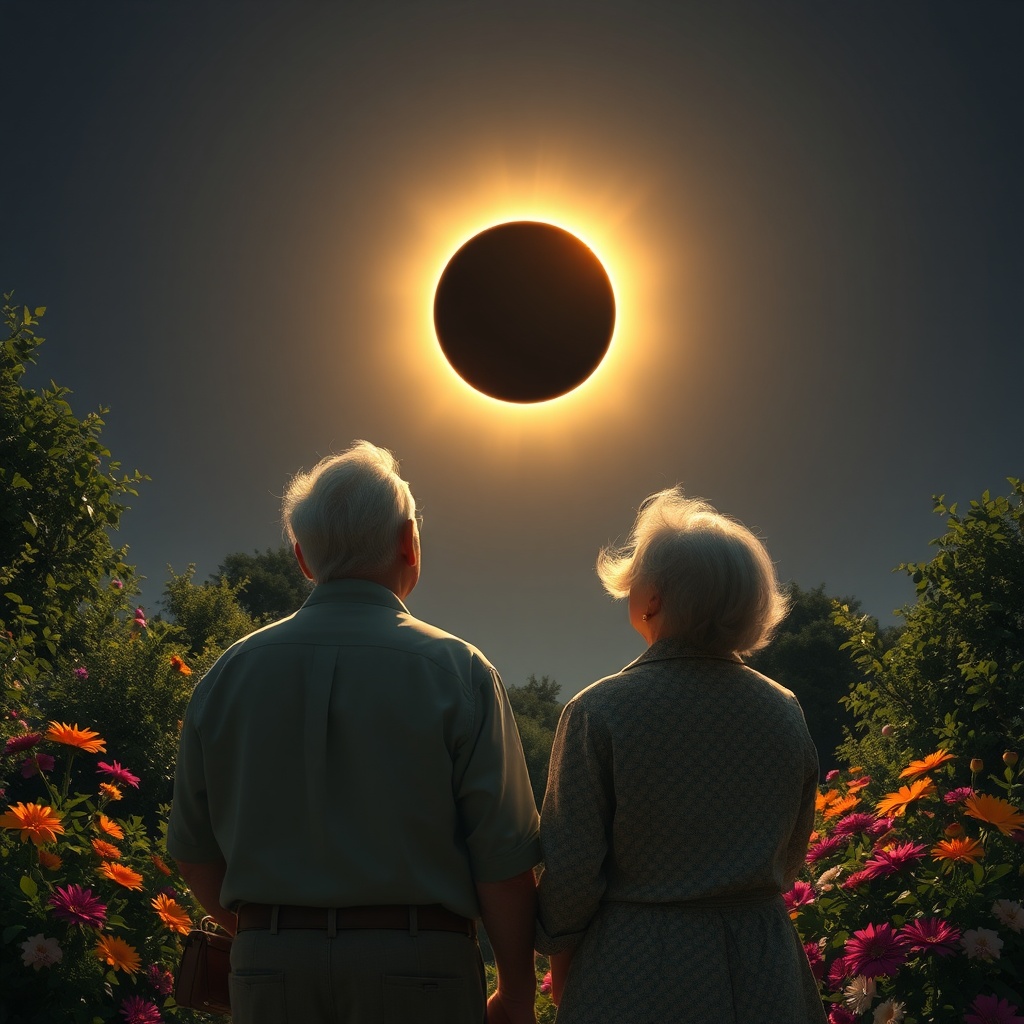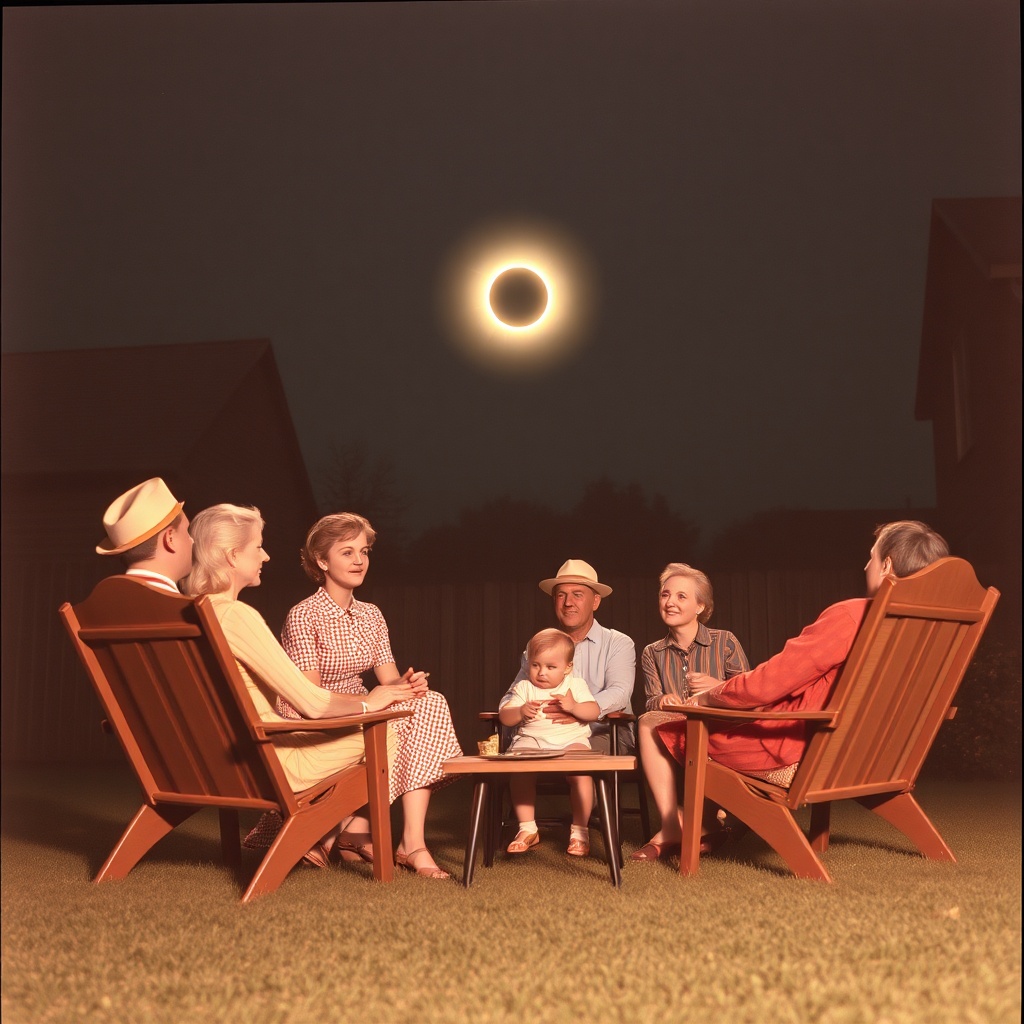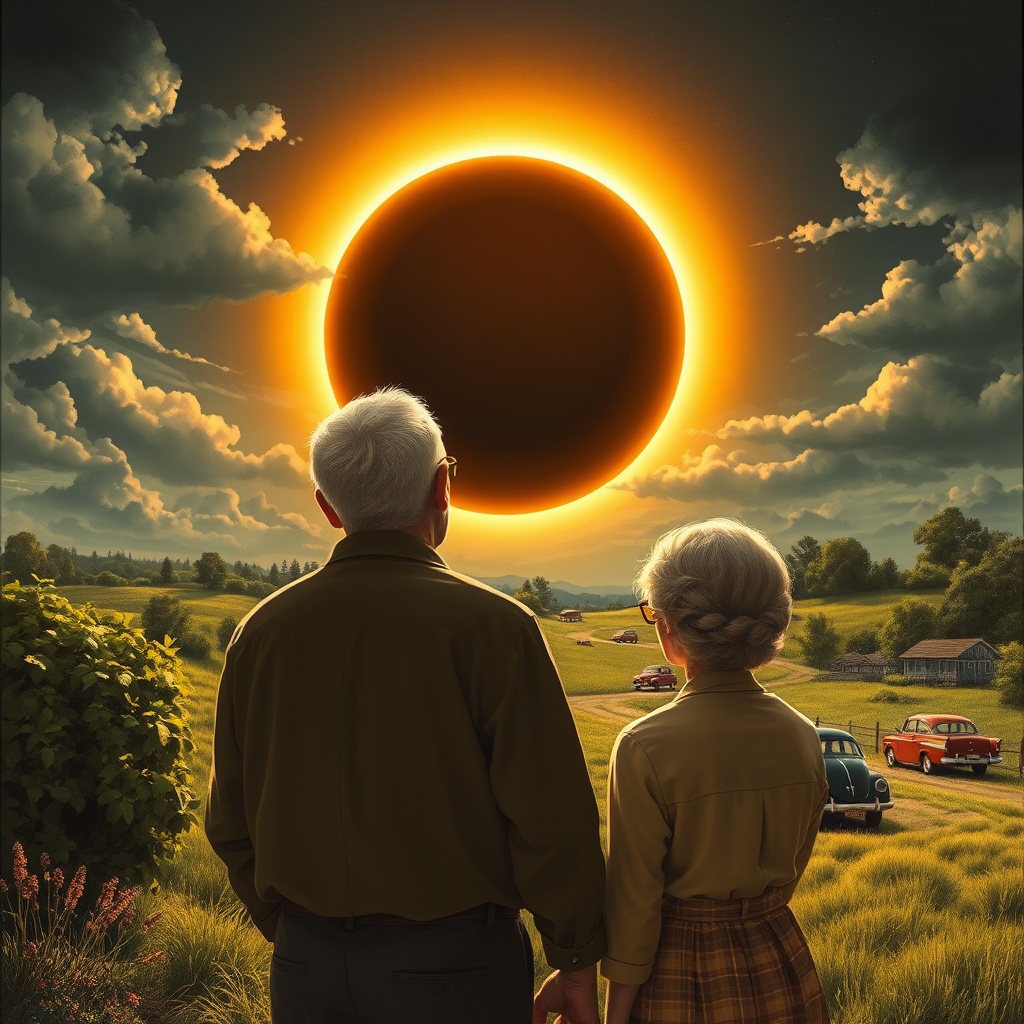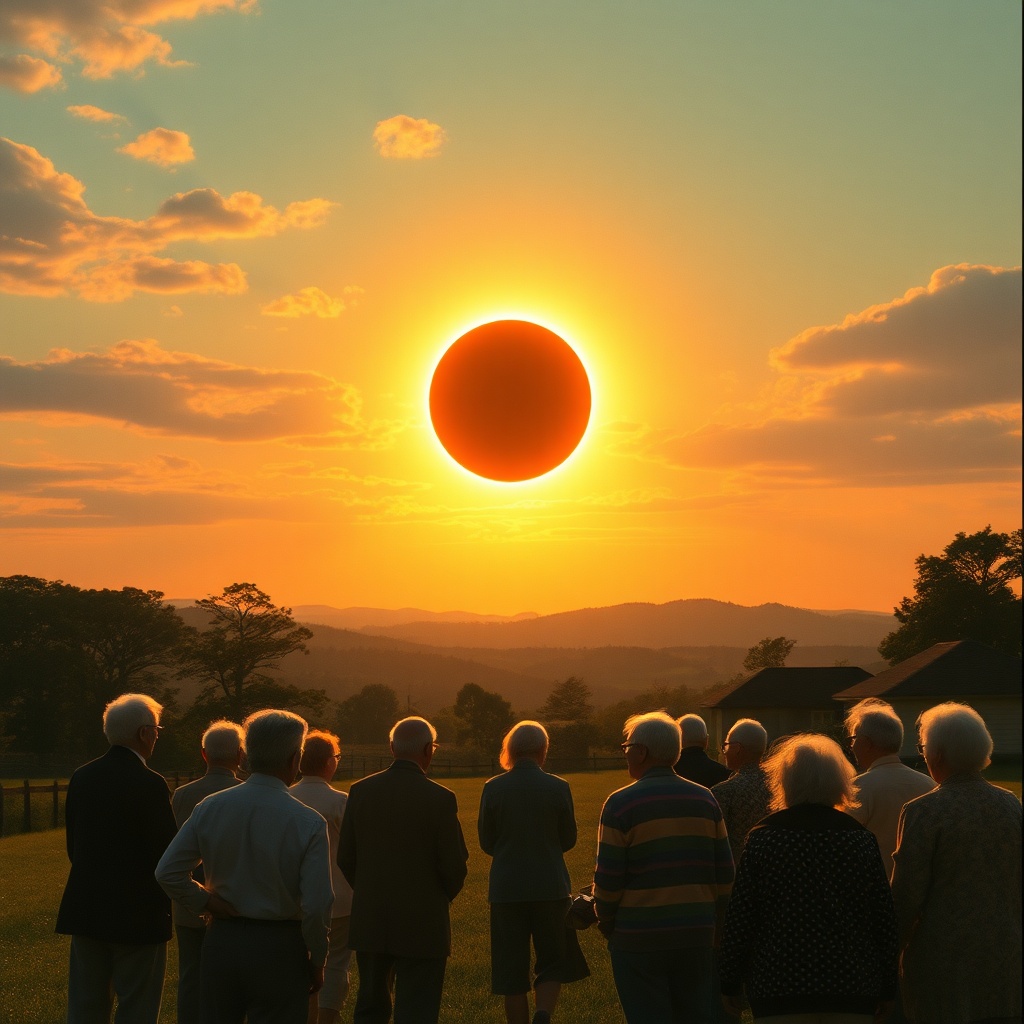Embracing the Shadow: How the 1960s Total Eclipse Captivated Generations

In the summer of 1963, a total eclipse of the sun cast its shadow across North America, drawing millions into a shared experience of awe and wonder. This phenomenon was not merely an astronomical event; it became a cultural milestone that resonated deeply with the spirit of the 1960s. Let’s take a journey back in time to embrace the shadow and explore how the eclipse captivated generations.
The Science of an Eclipse
What is a Total Eclipse? A total eclipse occurs when the moon passes directly between the Earth and the sun, blocking all sunlight and turning day into night for a brief period. This celestial event inspires curiosity and excitement, especially among the elderly who may remember the wonder of witnessing such an occurrence.
Historical Context
The 1960s were a time of change, marked by social upheavals and scientific advancements. This backdrop heightened interest in the 1963 total eclipse, making it a symbol of both hope and uncertainty. Many elderly individuals today reflect on how this event intertwined with the cultural narratives of their youth.
Emotional Resonance
Witnessing a total eclipse can evoke profound emotions. Imagine standing with loved ones, feeling the temperature drop as the sun disappears, and watching the sky transform. Did you experience this? Share your memories:
- What did you see?
- How did you feel?
- Who were you with?
The Eclipse as a Cultural Symbol
The 1963 eclipse became a metaphor for change, reflecting the societal shifts of the 1960s. Art, music, and literature were influenced by this event, capturing the essence of a generation that sought to break free from conventions. Were you inspired by the art of the era?
Community Engagement
Local communities organized gatherings to watch the eclipse, fostering connection among neighbors. Did your community have an event? Many elderly individuals recall the camaraderie that developed during these shared experiences, highlighting the importance of community in the face of change.
Legacy of the Eclipse
The 1963 total eclipse left an indelible mark on those who witnessed it. As generations pass, the stories of that day continue to be shared. What personal legacy do you wish to pass down?
Reflecting on the 1963 total eclipse allows us to embrace not just the shadow cast by the moon, but also the light of shared experiences and memories. For the elderly, this celestial event serves as a reminder of the beauty in life’s fleeting moments.
Glimmers of Wonder: Personal Stories from the 1960s Eclipse Experience

In the summer of 1963, a rare celestial event captivated the hearts of many across the United States. The total solar eclipse, a phenomenon that transforms day into night, left an indelible mark on those who witnessed it. This narrative invites you to relive the magic through the personal stories of those who experienced the eclipse firsthand.
A Day Like No Other
On July 20, 1963, families and friends gathered with excitement. Imagine children with cardboard eclipse viewers, adults with cameras ready to capture the moment, and everyone sharing a sense of wonder. What did you feel as the moon began to cover the sun?
Personal Accounts
- Mary Thompson, 78: “I remember standing in the field with my family. As the sky darkened, the temperature dropped, and we felt a chill. It was as if nature held its breath. We saw the stars twinkling in the daytime!”
- James Parker, 82: “I was in high school, and my friends and I made a day of it. We laid on the grass, and when the totality happened, we screamed in joy! The corona was breathtaking. It felt like magic!”
- Ella Rodriguez, 76: “My grandmother told us stories about eclipses. When I saw it, I thought of her. It felt like a connection to the past, and I swear I could hear her voice in the wind.”
Scientific Marvel
During the eclipse, the world turned its gaze upwards. Did you know? Scientists had set up observation stations to study the phenomenon. The excitement was palpable among astronomers and amateur stargazers alike.
Reflections on the Experience
As people emerged from the eclipse, they were forever changed. What did the eclipse teach you about the universe? For many, it sparked a lifelong interest in astronomy and a deeper appreciation for the natural world.
Conclusion: A Lasting Legacy
Decades have passed since that remarkable day, but the memories remain vivid. The 1963 total eclipse not only united people in awe but also served as a reminder of our place in the cosmos. Share your story: What do you remember most about that day? Your experiences are part of this celestial journey.
A Cosmic Connection: The Science Behind the 1960s Total Eclipse

The Science of Eclipses
Have you ever gazed up at the sky and wondered about the magnificent events that occur above us? One of the most awe-inspiring phenomena is a total solar eclipse. Let’s embark on a journey to explore how these celestial events happen, particularly the remarkable total eclipse of the 1960s.
What is a Total Solar Eclipse?
A total solar eclipse occurs when the Moon passes between the Earth and the Sun, completely covering the Sun’s disk. This alignment can create a stunning visual spectacle where day turns into night, even if only for a few moments.
Key Phases of a Total Solar Eclipse
To understand the magic of a total solar eclipse, let’s break down its key phases:
- Partial Eclipse: The first phase where the Moon starts to cover the Sun.
- Totality: The moment when the Sun is completely obscured, revealing the solar corona.
- Re-emergence: As the Moon moves away, the Sun begins to reappear.
Why Do Eclipses Occur?
The mechanics behind an eclipse can be fascinating:
- Orbital Patterns: The Earth orbits the Sun, and the Moon orbits the Earth in elliptical paths. Eclipses occur only during specific alignments.
- Syzygy: This term refers to the alignment of three celestial bodies. In this case, it is the Sun, Moon, and Earth.
The 1960s Total Eclipse
One of the most memorable total solar eclipses of the 20th century occurred on March 7, 1970. However, the 1960s were filled with significant eclipses as well, notably:
- 1961 Solar Eclipse: Visible in parts of Africa and the Middle East.
- 1966 Solar Eclipse: A notable event across the United States.
Viewing the Eclipse Safely
As we reminisce about these celestial events, it’s crucial to remember that viewing a solar eclipse requires proper safety measures. Here are some tips:
- Solar Eclipse Glasses: Always use certified eclipse glasses to protect your eyes.
- Pinhole Projector: Create a simple projector using a cardboard box to safely observe the eclipse.
Final Thoughts
Experiencing a total solar eclipse is not just about witnessing a rare celestial event; it’s a reminder of our connection to the universe. The wonders of science and nature come together in these moments, showing us the beauty of our world.
Whispers of Time: Cultural Reflections During the Great Eclipse of the 1960s
The total eclipse of the 1960s was not just a celestial event; it was a time capsule of cultural phenomena. As the moon obscured the sun, it cast a shadow not only on the Earth but also on the minds and hearts of people across various cultures. Let us traverse through this unique moment in history and explore the whispers of time that echoed during this extraordinary event.
The Eclipsed Sky: A Symbol of Change
In the 1960s, the world was undergoing radical transformations. The eclipse mirrored the societal shifts and turbulence. What did the eclipse symbolize for you? For many, it represented a moment of pause, a chance to reflect on the changing landscape of life.
Cultural Reflections
- Music: The 1960s gave birth to iconic music that resonated with the spirit of rebellion and hope. Bands like The Beatles and The Rolling Stones captivated audiences. Did you have a favorite song that played during this time?
- Art: Artists like Andy Warhol and Jackson Pollock challenged traditional norms, much like the eclipse challenged our understanding of celestial events. What art pieces from this era moved you?
- Fashion: The fashion of the 1960s was bold and expressive. From bell-bottoms to tie-dye shirts, clothing became a canvas for self-expression. What styles did you embrace?
Personal Stories: The Eclipse Experience
Many individuals traveled far and wide to witness the eclipse. Imagine standing in a field, surrounded by fellow eclipse-chasers, sharing whispers of excitement as the darkness enveloped the day. What memories do you have of your experience during the eclipse?
The Eclipse in Literature and Film
Literature and film captured the essence of the 1960s eclipse. Writers like Ray Bradbury explored themes of wonder and fear, while films showcased the spectacle in ways that resonated with audiences. Did you read or watch anything that left a lasting impression?
Conclusion: Embracing the Shadows
The total eclipse of the 1960s was more than an astronomical event; it was a moment of cultural reflection that united people in their curiosity and awe. As we reminisce about those days, let us embrace the shadows and light they brought into our lives. How do you feel about the connection between the eclipse and your own life experiences?
Beyond the Horizon: The Spiritual Significance of the 1960s Total Eclipse
Exploring the Cosmos
In the summer of 1963, the sky became a canvas for a remarkable celestial event: a total eclipse of the sun. This phenomenon not only captivated the eyes of millions but also stirred deep reflections about life, nature, and our place in the universe.
The Eclipse: A Celestial Spectacle
As the moon passed between the Earth and the sun, a shadow swept across the land, plunging the day into twilight. This breathtaking sight led many to ponder profound questions:
- What does it mean to witness such a cosmic event?
- How does this eclipse connect us to the universe?
- What spiritual insights can we draw from this experience?
Spiritual Reflection During the Eclipse
For many, the total eclipse was a moment of introspection and spiritual awakening. Here are some of the themes that emerged:
- Unity with Nature: The eclipse reminded observers of the intricate dance between celestial bodies. It encouraged people to feel a sense of belonging to something larger than themselves.
- Transience of Life: Just as the sun was temporarily obscured, so too are moments in our lives fleeting. This realization sparked conversations about cherishing time and relationships.
- Inner Illumination: The darkness brought on by the eclipse was seen as an opportunity for personal reflection. Many found themselves contemplating their life paths and spiritual beliefs.
Community and Connection
During the eclipse, communities gathered to share the experience. This collective witnessing fostered connections among individuals from diverse backgrounds, reinforcing the idea that:
- **We are all part of the same universe.**
- **Our shared experiences can transcend differences.**
Legacy of the 1960s Eclipse
The spiritual significance of the 1963 total eclipse continues to resonate today. Its legacy invites us to:
- **Reflect on our personal journeys.**
- **Foster connections with others as we share our unique experiences.**
- **Appreciate the wonders of nature and the cosmos.**
Engage with Your Thoughts
As we remember the total eclipse of the 1960s, consider the following questions:
- What memories do you have of that event?
- Did it inspire any changes in your life or perspective?
- How do you view the relationship between celestial events and your own spirituality?
In closing, the total eclipse of the 1960s was more than just a visual spectacle; it served as a powerful reminder of our shared human experience and our connection to the universe. Reflecting on this event allows us to appreciate both the beauty and the mystery of life itself.
